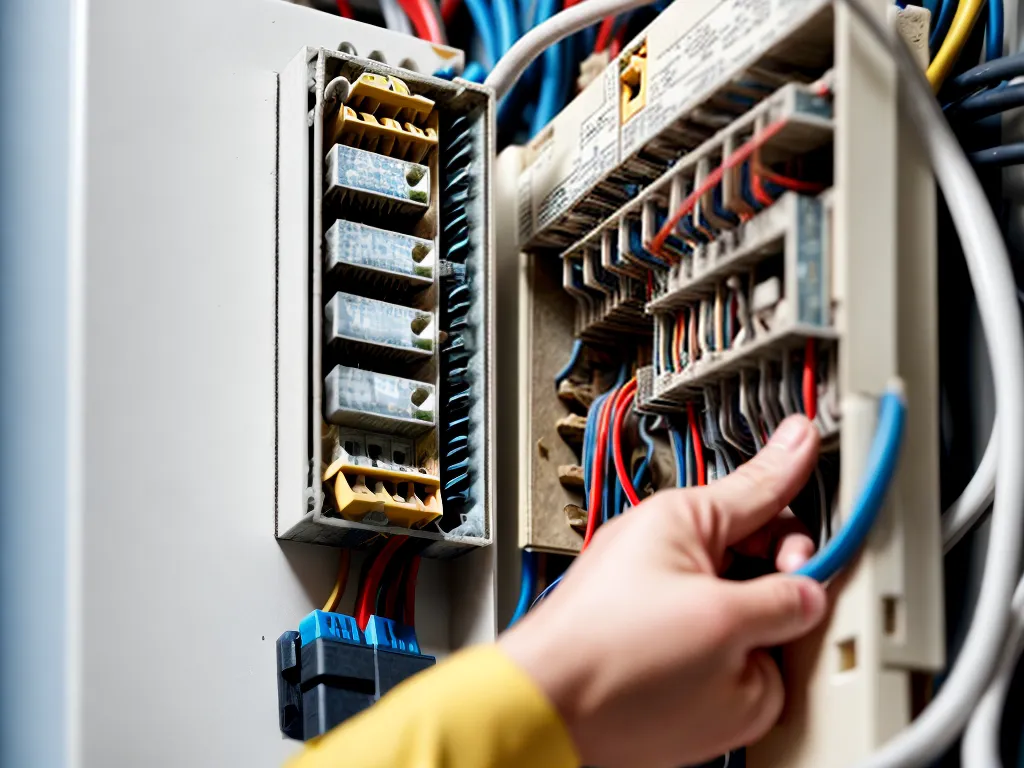
Working in commercial buildings often means dealing with complex electrical systems. While major outages are usually obvious, subtle issues can be easy to miss. Knowing how to spot and diagnose common electrical problems can help prevent disruptions and even fires. In this comprehensive guide, I'll share techniques for troubleshooting some of the most overlooked electrical issues in commercial spaces.
Checking for Faulty Wiring
Faulty or outdated wiring is a leading cause of electrical fires in commercial buildings. Here are some signs of wiring problems and how to track them down:
Indications of Faulty Wiring
-
Frequent tripped breakers or blown fuses - This usually means a short circuit or overloaded circuit. However, it can also indicate damaged wiring.
-
Discolored or cracked outlets - Heat damage around outlets may mean wires are overheating.
-
Odd electrical smells - Burning plastic or rubber smells can signal wire insulation damage.
-
Flickering lights - If lights dim or brighten without cause, wiring may be loose or corroded.
Inspecting the Electrical Panel
-
Open the main panel and check for scorch marks or discolored breakers. This shows excess heat at connections.
-
Use a non-contact voltage tester to check for power leaks around breakers and bus bars. Leaks point to damaged insulation.
-
Ensure breakers are properly matched to wire sizes. Undersized breakers can fail to trip with overloads.
Checking Wiring Condition
-
Remove outlet and switch covers to inspect wires. Watch for brittle, cracked insulation or exposed copper.
-
Check connections are tight and free of corrosion. Loose connections can arc and ignite.
-
Inspect outlets along circuits for uneven heat or discoloration. This may indicate points of high resistance in wiring.
-
Consider thermal imaging scans to identify hot spots in walls that may signal problems behind the surface.
Finding Neutral-Ground Faults
Mixing up neutral and ground wires creates dangerous stray voltage. Here's how to find neutral-ground faults:
Using a Voltmeter
-
Shut off power and disconnect a circuit's hot wire.
-
Check voltage between the neutral and ground wires. Any voltage over 0.5V means neutral and ground are crossed.
Using a GFCI Outlet
-
Replace the first outlet on a circuit with a GFCI outlet.
-
Plug in a light or tester down the line and trip the GFCI.
-
If power cuts out down the line, neutral and ground are mixed somewhere.
Listening for Noise
-
Use an AM radio tuned off-station and walk along circuits. Listen for increases in static.
-
Greater static around certain wires indicates stray voltage between neutral and ground.
Checking for Loose Connections
Loose wire connections can increase resistance and cause dangerous overheating. Here's how to find them:
Wiggle Testing
-
With power off, gently wiggle each wire at outlets and junction points. Movement signals a loose screw or terminal.
-
Pay attention to the hot terminals on outlets which see the most heat. Loose connections here are most prone to arcing.
Thermal Imaging
-
Use a thermal camera to scan wires, particularly at junction and splice points.
-
Hot spots point to loose connections even if wires don't visibly move.
Voltage Drop Testing
-
Use a digital multimeter to measure voltage at circuit breaker and outlet.
-
More than 3% lower voltage at the outlet indicates resistance from loose wiring.
Inspecting Conduit and Raceways
Damaged or overloaded conduits can overheat wires and lead to breakdowns.
Checking for Damage
-
Look for cracked, bent, or crushed conduits. This can cut into insulation and expose conductors.
-
Pull on conduits to check for loose joints where water and debris can enter.
Assessing Wire Fill
-
Remove cover plates to visually inspect fill level. Wires should occupy less than 40% of conduit area.
-
For larger conduits, use a wire-mapping probe to gauge fill percentage. Overfilled conduits overheat.
Verifying Separations
-
Ensure power and low voltage wiring run in separate conduits. Mixed conduit allows interference.
-
Check that conduit runs maintain proper distances from sources of heat like steam pipes. Heat accelerates insulation breakdown.
Testing Grounding and Bonding
Proper grounding and bonding protects against shocks and stray voltage.
Using a Multimeter
-
Check circuits to verify hot, neutral, and ground read ~120V, 0V, and 0V respectively. Any variance means improper grounding.
-
Test ground rods and bonds by checking voltage between grounds and known good ground like a copper pipe. A reading over 25mV indicates a problem.
Conducting a Formal 3-Point Test
-
Shut power to panel and trip main breaker. Turn kilowatt meter to resistance setting.
-
Touch probe to neutral bus and building steel. Resistance should read <10 ohms.
-
Move one probe to ground bus. Resistance should still read <10 ohms. A high reading means a bonding problem.
Checking Equipotential
-
Use a multimeter to measure potential difference between metallic equipment like pipes and conduit.
-
Any difference over 1V means equipment is not properly bonded.
Following these troubleshooting steps can help catch overlooked electrical issues before they cause disruptions. Pay special attention to signs of overheating and loose connections which are common precursors to failure. Thermal scans and voltage drop testing also provide objective data to assesscondition and catch problems early. Properly grounding and bonding all conductive systems is critical to prevent shock hazards. Staying vigilant with electrical inspections and testing reduces risk and provides peace of mind.